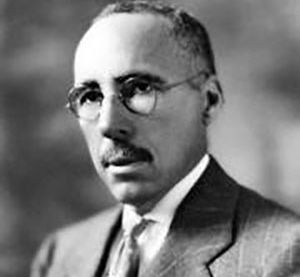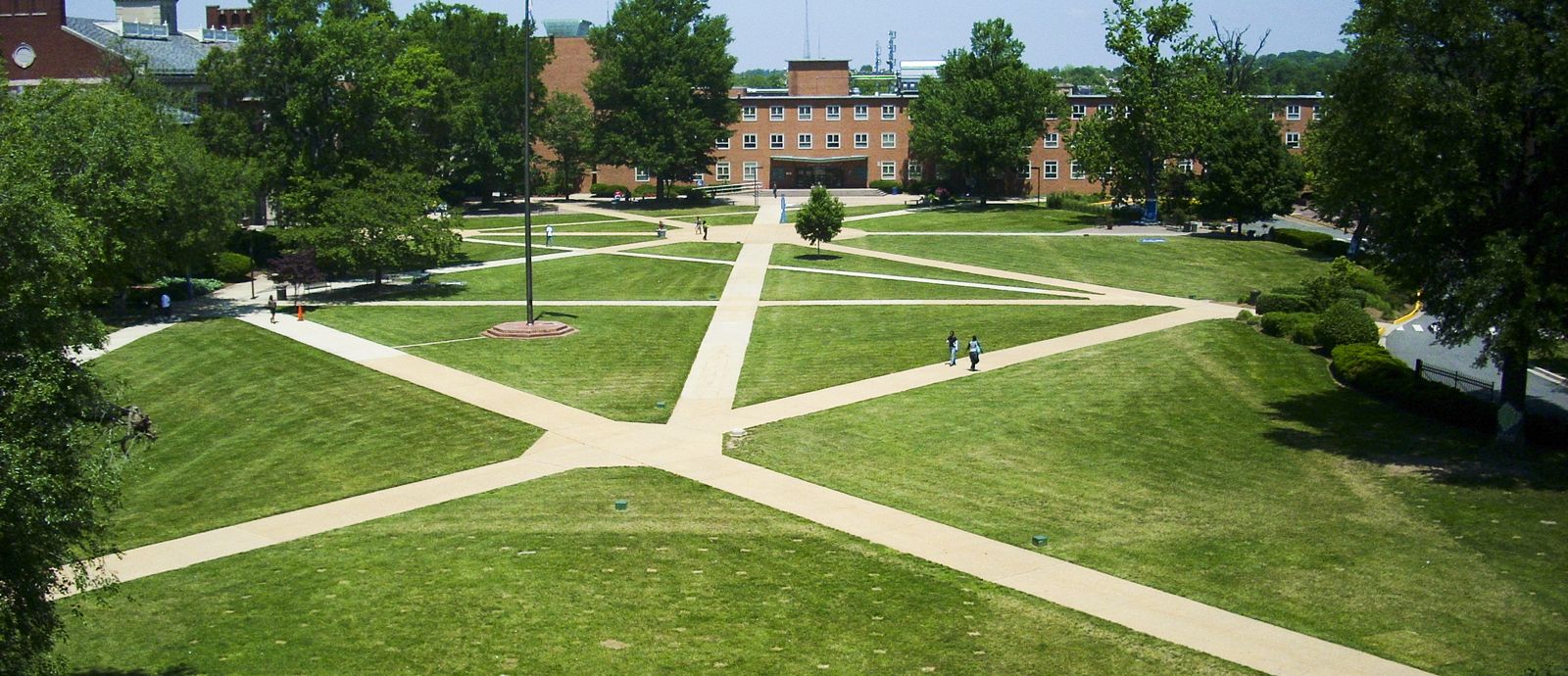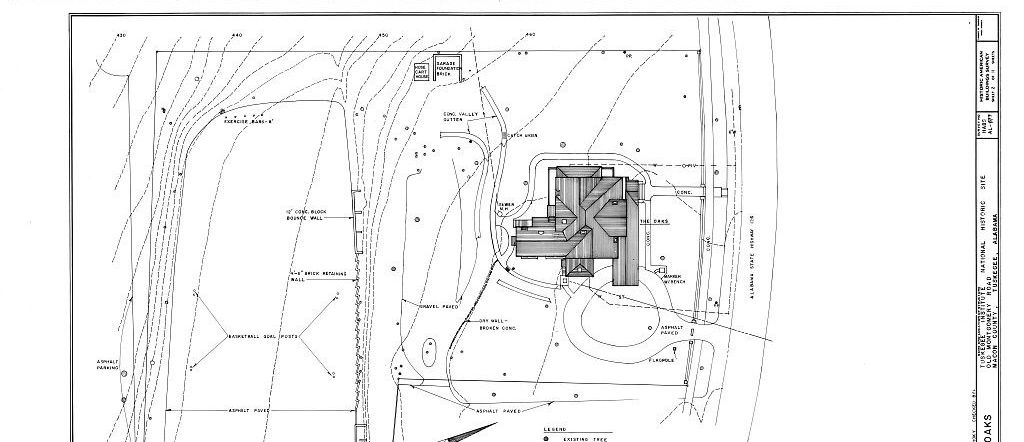Inspiration
David Augustus Williston (1868-1962)

Story Highlights
David Augustus Williston, recognized as the first professionally-trained African American landscape architect, left a lasting legacy through his work as college campus planner and horticulturalist.

Early Life & Education
Williston was born in 1868 outside of Fayetteville, North Carolina as the second of thirteen children. In 1893, he joined one of his brothers in Washington D.C. to attend Howard Normal School. After is graduation in 1895, he enrolled at Cornell University, where he became the first African American student to obtain a bachelor’s degree from the College of Agriculture. He went on to complete additional municipal engineering courses through the International Correspondence School in Pennsylvania.
Teaching Career
Williston began his teaching career at the State College of North Carolina at Greensboro in 1898. In 1902, he joined the agricultural science faculty as a professor of horticulture at the Tuskegee Institute, now Tuskegee University, where he taught intermittently for the next 27 years.
Along with teaching, Williston also oversaw the development of the campus as the superintendent of buildings and grounds from 1910 through 1929. His landscape plan for the campus included allées of trees that reinforced the formal arrangement of the road network, the addition of open spaces resembling collegiate quadrangles, straight lines of trees along the edges of the formal open spaces, and less formal plantings in the center of campus.
Williston also completed the planting designs for several Tuskegee facilities, including the George Washington Carver Museum, The Oaks (home of Booker T. Washington), and the 99th Pursuit Squadron Training School, where the Tuskegee Airmen were based.
Without access to established nurseries, Williston used surrounding resources to successfully propagate plants for his work.
Later Career
At the onset of the Great Depression, Williston moved to Washington D.C. in 1930, where he established the first African American-owned landscape architecture firm in the nation. Throughout his career, Williston both taught and practiced landscape architecture as a horticulturist and campus planner at dozens of leading historically black institutions.
Williston's campus designs reflect the English landscape style, a school of thought which preferred picturesque and irregular arrangements in plant massing and landforms. His work includes site planning and design at Fisk University, Tennessee Agricultural and Industrial, Clark University, Alcorn State University, Lane College, Philander Smith College, and the expansion of Howard University in collaboration with architect Albert Cassell.
Through the years, Williston maintained a close relationship with the Tuskegee Institute as a consultant from 1929 through 1949. Included in his contributions was a new landscape plan for the campus, presented in 1948. His plan organized buildings into groups, keeping with the Tuskegee tradition of grouping buildings based on function.
Williston also completed the site planning and landscape design for the Langston Terrace Housing Project, the first federally funded housing project in Washington D.C., completed between 1935 and 1938.
Williston worked into his 90s, passing away in 1962 at the age of 94.
The Yard
After moving to Washington DC, one of Williston's commissioned works included the central gathering space for Howard University, better known as “The Yard.”

The Yard is enclosed by several buildings, including Founders Library, Frederick Douglass Memorial Hall, and Andrew Rankin Memorial Chapel, which have been the setting for major events and figures in the modern Civil Rights movement.
It was in Founders Library — designed by the Black architect Albert Cassell — that the school’s law professors, including Charles Hamilton Houston and Thurgood Marshall, formulated the legal strategies that led to the groundbreaking 1954 Supreme Court decision Brown v. Board of Education of Topeka, which struck down the “separate but equal” doctrine that was the underpinning of Jim Crow.
Since its creation, The Yard has become a gathering space for celebration and public dialogue.

Home of Booker T. Washington
The Oaks
The Oaks is a three-story Queen Anne style home that was built for Booker T. Washington.
Booker T. Washington was an American educator, author, orator, and adviser to multiple presidents of the United States. Between 1890 and 1915, Washington was the dominant leader in the African American community and of the contemporary black elite. Washington was from the last generation of black American leaders born into slavery and became the leading voice of the former slaves and their descendants.
Booker T. Washington was the first president of Tuskegee, and "The Oaks" was constructed by students as part of their curriculum.

David Williston’s designs guided the development of the landscape at The Oaks, including a picket fence around the front and side yards, tree and shrub plantings throughout the property, and the siting of a carriage house, well-house, and a gazebo.
His designs also called for the establishment of plots for a vegetable garden (pictured with Booker T. Washington), cold frames, and animal husbandry on the backside of the house. While fruit and pecan trees were brought in, it is likely that native tree species were transplanted to the property from the nearby woods.
Booker T. Washington described Williston as "a sticker, never a quitter."

The Oaks may have been one of the first collaborations between Williston and George Washington Carver, each pioneers of their respective trades. The two men would go on to collaborate on other Tuskegee Institute projects.
Williston's design at The Oaks was typical to his campus planting arrangements, including informal clusters of evergreen shrubs with hardwood trees. The plant palette was also similar to selections used in campus planting plans, which frequently favored native plants. Trees included elm, oak, maple, cedar, magnolia, catalpa, fringetree, redbud, dogwood, sweetgum, cherry laurel, and American holly. He also made use of yucca, yaupon holly, jessamine, and French mulberry. Williston selected non-natives if they were available, such as wax-leaf privet, Japanese quince, winter honeysuckle, and varieties of spirea. His plans have been recognized as cost-effective and also practical for the hot climate where many of them were located.

Although the landscape experienced several changes when the Washington family no longer resided on the property, elements of Williston’s plans remain.
Three years after Williston's death, the Tuskegee Institute was designated a National Historic Landmark for its contributions and advancements in education, and the Tuskegee Institute National Historic Site was thereafter established in 1974. The National Historic Site includes portions of the Tuskegee campus and The Oaks, preserving Williston’s important legacy of landscape planning and design.
Cascading Curves - A Case Study
Cascading Curves - A Case Study
This homeowner approached Outdoor Dreams while relocating from Hawaii into their newly built custom home. With a fresh start in Virginia, they envisioned a poolscape that would feel both welcoming and grounded—a space that blended seamlessly with the architecture of their home while also reflecting the rustic, natural warmth of the Midwest.
Sculpting Fire - Custom Curved Fire Features
Sculpting Fire - Custom Curved Fire Features
When it comes to building a luxury poolscape, a swimming pool is just the beginning. The real magic happens in the details—the elements that transform a backyard into an unforgettable retreat. For the Cascading Curves Project, that magic came in the form of two fully customized, curve-driven fire features that now anchor the space with drama, warmth, and unmistakable personality.